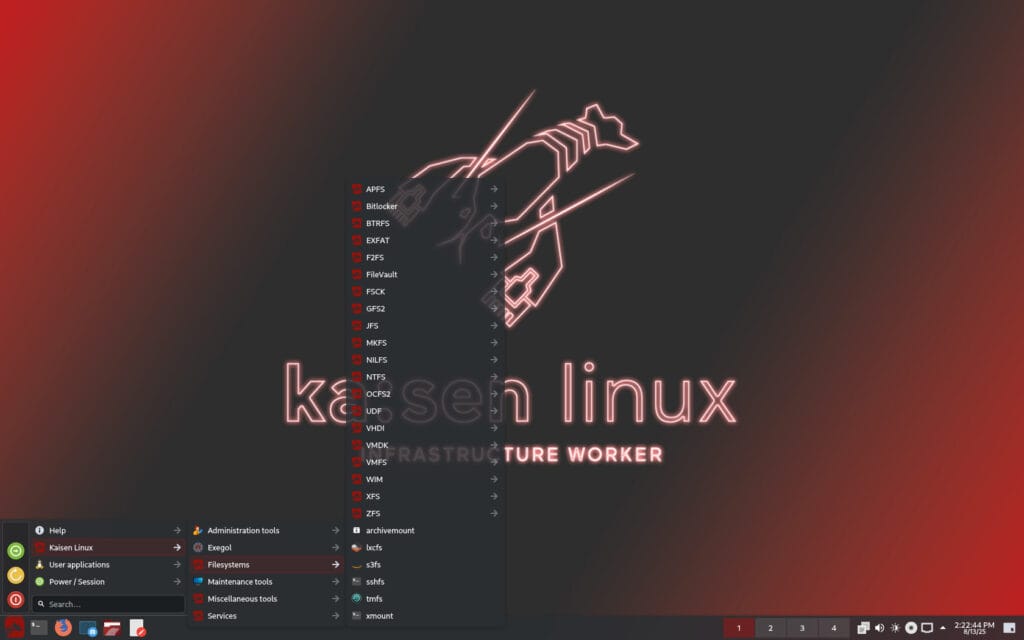Folks who’ve been around the Linux world for a while are used to its constant changes and rarely get caught off guard. But every now and then, something comes along that really does take you by surprise.
Why am I saying this? Because until now, I’d never seen a release announcement that rolled out new features while also announcing… the end of the project. Yet that’s exactly what just happened with the freshly released Kaisen Linux 3.0.
If you haven’t heard of it, that’s understandable—this distro doesn’t usually get much time in the spotlight. It’s a Debian-based toolkit tailored for IT professionals, system administrators, and network engineers, offering a suite of tools for diagnostics, maintenance, and repair of computer systems and networks.
Designed as a “live” system that can run from a USB stick without installation, it includes utilities for disk management, data recovery, network analysis, system monitoring, and hardware testing, all preconfigured for immediate use, making it a niche but valuable resource in professional environments.
The recent announcement of the new 3.0 release opens with the words:
I would like to begin this blog post by announcing the end of the Kaisen Linux project with this latest release.
I wish to embark on other professional and personal projects that will take up a considerable amount of my time, and for this reason, I can no longer continue developing Kaisen Linux. This release will therefore be the last.
Of course, this is nothing new in the Linux and open-source ecosystem, especially when it comes to one-person, single-maintainer distros. They come and go, following the usual cycle we’ve seen so many times before. But let’s take a look, anyway, at what this latest (and final) release has to offer.
First off, powered by kernel 6.12, Kaisen Linux 3.0 is entirely rebased on the just-released Debian 13 (Trixie) and introduces a bold visual rebranding: the iconic dragon is replaced with a lobster motif—an homage to the multiple meanings of “Kaisen” in Japanese.

A suite of new tools is now included by default, adding to the distro’s administrative and DevOps arsenal: glab, tekton‑cli, argo‑cd, openbao, opentofu, zfs‑dkms, and hyfetch. At the same time, a sizeable list of tools has been removed—including firmware‑microbit‑python, neofetch, isomaster, hping3, exfat‑fuse, bonnie++, and others .
Many major software packages (heavily targeted to the DevOps professionals) have also been upgraded to the latest versions, such as Minikube 1.36.0, Kubernetes 1.33.3, VirtualBox 7.1.12, Vagrant 2.4.8, Velero 1.16.2, Trivy 0.65.0, Vault 1.20.2, Terraform 1.12.2, GNS3 2.2.54, Helm 3.18.4, EKSctl 0.212.0, k6 1.1.0, Packer 1.14.1, Docker 26.1, and so on.
Moreover, KDE Plasma 6 (v6.3.6) is now the default desktop environment; XFCE has also been updated to version 4.20. Plus, SDDM replaces LightDM as the default display manager.
Something that Kaisen Linux users need to keep in mind is that in the 3.0 release, the update commands (apt upgrade and apt-get upgrade) now automatically redirect to full‑upgrade, reducing reliance on the kaisen‑update wrapper and minimizing system breakage risk.
There is a new one‑command solution for snapshot recovery, kaisen‑timeshift‑fast‑restore, which simplifies restoring the booted BTRFS snapshot. Additionally, support for ZFS management tools is now fully integrated (including kernel module loading), and the SSL/TLS menu has been restored.
Other improvements include four built-in terminal color profiles (switchable via keyboard shortcuts or context menu, and user‑modifiable), revamped documentation, over 1,705 centralized manpages with fixed links and added configuration file categories, and simplified, safer default partitioning in the installer to preserve snapshot functionality.
Lastly, the new kaisen‑snapshot utility provides a convenient wrapper around Timeshift for daily backup management.
As we said at the beginning, Kaisen Linux’s developer has made it clear that version 3.0 is the project’s final release, so there will be no new features, no new major versions, and no long-term continuation of development.
However, the distro isn’t being abandoned overnight — security updates will continue for the next two years. This gives existing users breathing room to keep running it safely while planning a migration.
Security updates will still be provided for two years, giving you time to switch to another Linux system and familiarize yourself with your new environment.
During that time, the system’s Debian 13 “Trixie” base will still receive upstream updates from Debian, and Kaisen’s own repositories will keep pushing package fixes for its bundled tools. Users who rely on Kaisen Linux for daily IT work are encouraged to start testing alternatives.
In short, the distro is in maintenance-only mode: no active feature development, but a planned, supported wind-down to let users transition without rushing.
For more information, see the announcement.

It’s sad indeed, but also another example on why trusting g a single person project is risky.
Anyways, thanks for the effort!